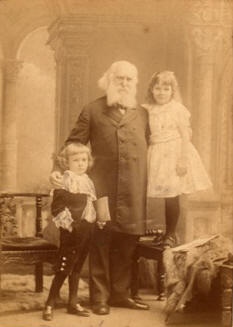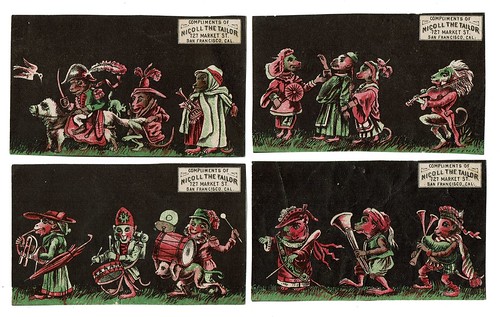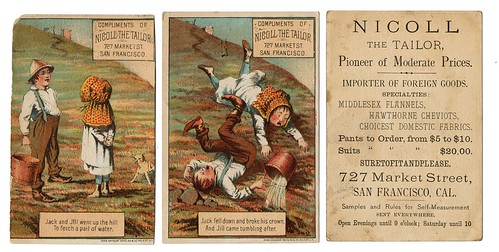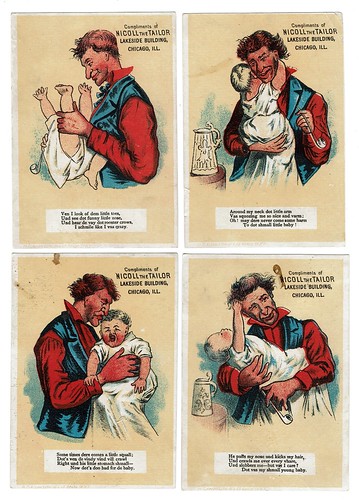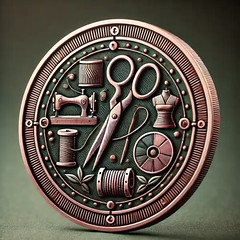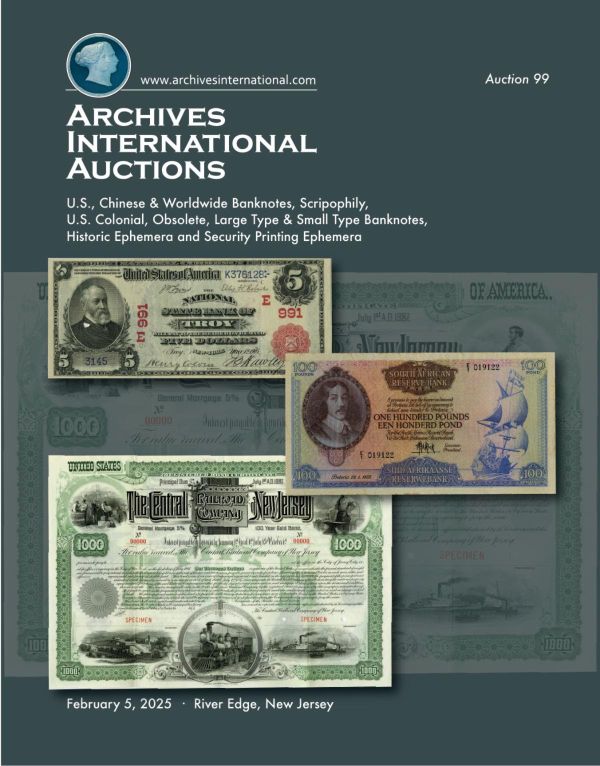
PREV ARTICLE
NEXT ARTICLE
FULL ISSUE
PREV FULL ISSUE
ALEXANDER NICOLL (1821-1895)E-Sylum Feature Writer and American Numismatic Biographies author Pete Smith submitted this quiz article on businessman Alexander Nicoll aka "Nicoll the Tailor". Thanks! -Editor I recently started collecting Victorian trade cards from Nicoll the Tailor. The paper they are printed on is limp and cheaper than typical trade cards. Can any E-Sylum reader figure out why I have an interest in them?
Alexander Nicoll (1821-1895)
The father was a tailor in London. He was married in 1841 to Elizabeth Powell (1819-1877). They had ten children. Alexander moved to Australia in about 1854. In 1856, he was in the Australian Census in Collingwood, Melbourne and employed as a tailor. He moved to New York in 1869 and opened a tailor shop at 143 Bowery near an area called "Little Australia." Bowery is the oldest street in the city and was once an Indian trail. He did business under the name of Nicoll the Tailor. It was reported that his store had the first electric lights in the city. The street was described as "The liveliest mile on the face of the earth." The street hosted saloons, dance halls, concert halls and theaters. Nicoll spent $100,000 a year on publicity and promotion. The business was successful and he expanded to other locations. By 1879 he had fifty-two stores and was represented in every state in the Union (37). The New York Times of October 30, 1878, carried a description of the business: "In a dingy little back office at No. 141 Bowery sits, day after day, a white-haired old gentleman, who manages the business of 42 merchant-tailoring establishments. The principal house is contained in the block numbering from 141 to 149 Bowery. In the basement is located the receiving room. Where all the cloth used in the several establishments in this city is delivered. It is then removed to another floor and cut into patterns by hundreds of boys. Each pattern is represented by a similar number, and the 42 houses each receive a share of every style. The upper floors are occupied by the cutters and by men, boys and girls, who work at sewing machines operated by steam. When a pair of pantaloons is ordered by a customer, his measure is sent up stairs, the cloth is cut, and then the garments passes through the hands of 12 different operators who turn out a complete pair of trousers in two hours and a half." The store at 145 Bowery was destroyed by fire on March 8, 1887. This was followed by a fire sale of water-stained merchandise. An elevated railroad ran by the store. During the fire, a train stalled near the building. Some riders got out to walk down the track. When the train started up again, some of these walkers were knocked off the track and fell head first twenty feet to the ground. Three men were killed and several others injured. Alexander retired in 1885. In retirement, he travelled around the world twice and crossed the Atlantic forty times. His son Donald took over the New York stores and other eastern locations He died in London on September 25, 1895. His body was cremated in London and the remains returned to Brooklyn for internment at Green-Wood Cemetery. Smarty-Pants question of the week: What is the numismatic connection? I've never heard of a "Little Australia" in New York or any other city. While Pete's article could be an elaborate prank, I'm sure there is indeed a numismatic connection somewhere, even if not readily apparent on the Newman Numismatic Portal (yeah, I looked). When you've been immersed in numismatics long enough, you can't help but see numismatic connections everywhere. They can be tenuous and indirect, but once seen, can't be unseen. There are often many direct connections too, although perhaps only a dedicated researcher will find them.
Usually numismatists start their research with a numismatic item in hand and work backwards from there to find its history. Starting with a history and searching for a numismatic item is a taller order. But E-Sylum readers are up to the task. Who can name the numismatic connection? Bonus points for locating connections Pete wasn't already aware of, and including images of your finds. -Editor
Wayne Homren, Editor The Numismatic Bibliomania Society is a non-profit organization promoting numismatic literature. See our web site at coinbooks.org. To submit items for publication in The E-Sylum, write to the Editor at this address: whomren@gmail.com To subscribe go to: Subscribe All Rights Reserved. NBS Home Page Contact the NBS webmaster 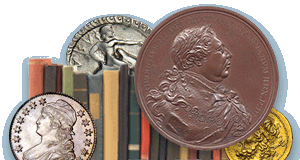
|
